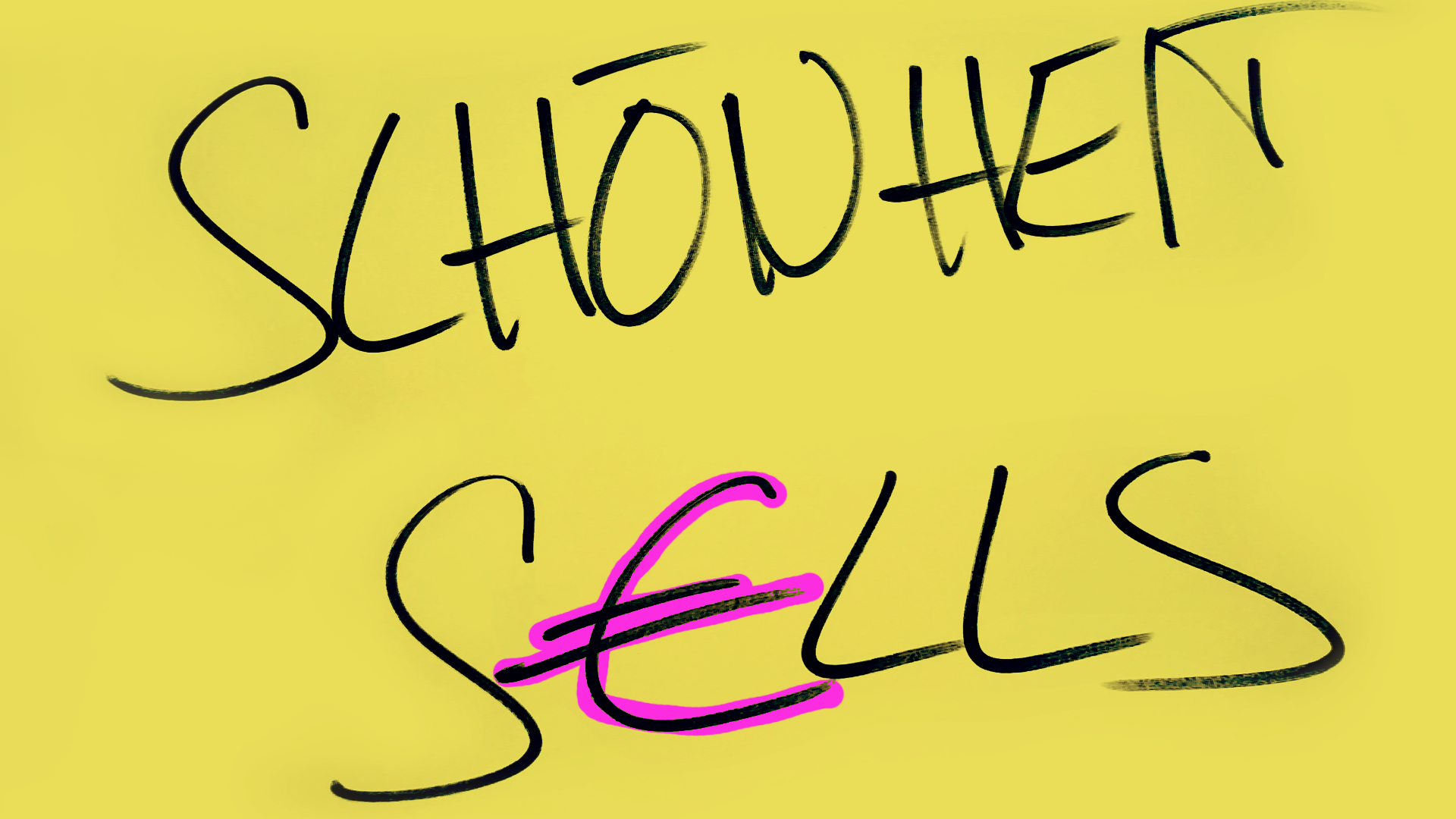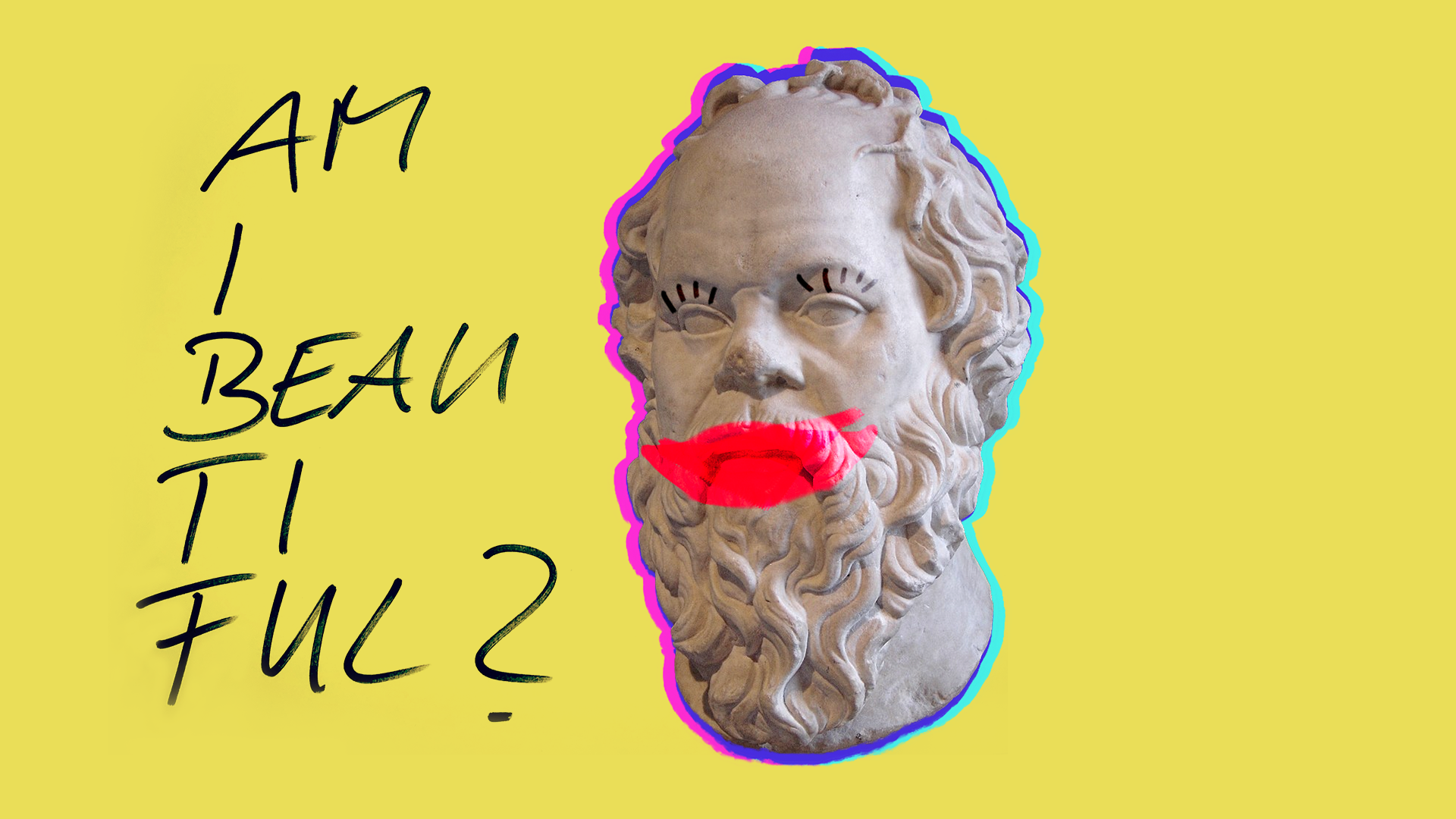THE GREAT MISUNDERSTANDING
WITH BEAUTY

It’s kind of crazy. We designers talk about content automation, scrum, implementation, brand coefficients, and whatever else helps us improve our design, make the case for our designs, and make others understand how we work. We have acquired a huge range of skills. We can dig deep into any subject matter, be it technologies or industries. We have acquired the expertise and jargon of IT developers, management consultants and the like. But there is one thing we seem to have forgotten, and that has a lot to do with our identity. That makes it all the more urgent to counteract this. Because our work is added value for the economy.
LET’S TALK ABOUT IT
“We avoid words like beauty between the hours of 9 a.m. and 5 p.m.,” is an astute observation made many years ago by business consultant and author Tom Peters. And let’s face it, it’s still true today. Not only during working hours, but also in our free time, we bracket out beauty. Even we designers don’t use the word beautiful at all or use it completely wrong. In everyday life, beautiful is usually followed by the conjunction ‘but‘. Or we use beautiful synonymously with nice. That is, when we don’t really want to say anything, but somehow feel compelled to answer. It expresses the triviality, the meaninglessness. Our speech behavior does not dignify beauty in any way. Think about it for a moment, when was the last time you presented an idea, design or project and used beautiful as an argument? You don’t use it because it’s considered superficial. It supposedly describes aesthetics without deeper meaning. It seemingly describes boring perfection. Beauty is not edgy enough. But that’s a misunderstanding. Beautiful means so much more. And we designers are tasked with communicating it to our clients. It’s significant that it was noticed many years ago by a management consultant, not a designer.
PERFECTION IN THE EYE OF THE BEHOLDER
La bellezza. Beauty. We associate it primarily with aesthetics. We think of the flawless bodies of Cara Delevingne and Kaia Gerber, the streamlined shapes of a Porsche, the art of Modigliani and Poussin. In a broader sense, products such as cosmetics, perfume or haute couture come to mind. In our understanding, beauty is almost synonymous with perfect appearance. That was not always the case.
BEAUTY IS NOT PERFECT LOOKS
The Renaissance artist Michelangelo developed the stylistic device of non-finito (Italian for not finished). As a sculptor, he made the decision not to complete some of his works. Sculptures were created that only hint at figures. Renaissance art theory presupposes that the recipient can “see the unfinished work to completion.” The non-finito was considered a high artistic and intellectual achievement. Perfection did not have to be portrayed by the artist; the viewer completed it in his or her engagement with the art. Beauty, then, is by no means superficial perfection, but rather a cognitive process that unites seeing and thinking. This is not a conception that died out with the Renaissance, but is valid throughout all epochs up to our present time.
THEY SAY AUTHENTICITY BUT MEAN SOMETHING ELSE
So why don’t we use beautiful to describe a brand identity or campaign? It has a lot to do with another word that is now haunting all design media and popping up in every presentation: Authenticity. Digital photography, and with it social media, have changed our viewing habits. The internet is full of blurred, underexposed or overexposed shots with millions of clicks. Marketing departments and designers are seizing on the supposed imperfection and designing their advertising campaigns accordingly. All under the guise of authenticity: “the brand must become more authentic.” It is justified as a departure from beauty, as a deliberate ugliness in order to be taken seriously by generations Z and Alpha. But it is not authentic. Authenticity means that what is portrayed and the fact correspond, i.e. genuineness. These campaigns are not genuine, because they are often produced at great expense in order to then appear completely casual. It is more appearance than reality. This is not wrong or reprehensible, as long as it is not implemented too clumsily. Marketing has to address the target groups and we designers basically have the task of thinking, acting and designing in a customer-centric way. But let’s not call it authentic. Let’s call it beautiful, because imperfect can also be beautiful! We know that our perception of beauty is changing. Umberto Eco already tells this story impressively in his book. That’s why we should describe the next campaign with photography in semi-darkness and with models without make-up as beautiful.

RESERVED FOR FASHION AND ART?
Why we may call many things beautiful is answered by Socrates and Plato in the Hippias maior. No, designers don’t have to quote Socrates or Plato now. Nor do they have to read them. Nevertheless, they are welcome to take a look at the Wikipedia article. We should not expect a final definition of beauty from the philosophers either. But they show us that beauty is more than an aesthetic sense, because they abstract the concept. The philosophical thought can be broken down to a simple formula:
BEAUTIFUL = GOOD = TRUE
Beauty consequently involves more dimensions than the purely visual. Function and perception can also be factors that make something beautiful. That’s why we may call much more beautiful than we think. A paint shop that manages almost without water, beautiful! A software for the fleet management of test vehicles, beautiful! A tunnel boring machine that connects two continents, beautiful! We designers have to recognize this beauty, work it out and above all we have to name it. This is certainly more difficult than a new handbag collection. It is the supreme discipline to make the beauty in every inconspicuous product visible to others. Every designer should have the incentive to measure up to that.
THE GERMAN ECONOMY IS BEAUTIFUL
Whether it’s a tinkerer’s garage or a DAX company, a start-up or a medium-sized enterprise, the German economy is based on technologies. And technologies are beautiful. Technical progress is a positive force. It advances society, it connects everyone in the world, it raises medical standards, it makes education more accessible, it makes life more sustainable. So when technology is viewed from this perspective, it is beautiful. It’s not for nothing that the German term Ingenieurskunst also contains the word Kunst. We Germans just have a deep and multi-layered connection to technology. We designers want to emphasize the beauty of technologies with our communication design – we want to bring out the aesthetics, of course, but also the comprehensibility of their benefits, their functionality, and their application. We support the engineer so that others also recognize the beauty of his invention. This has not only an idealistic value, but also a business value.
A SUCCESS FACTOR
Design is added value for products and companies. This is not a new insight. The Bundestag promoted design even in the early days of the Federal Republic of Germany and advocated the establishment of the German Design Council. The foundation’s mission is to support the German economy in design as an economic and cultural factor. Management consultants are also investigating the influence of design on corporate success. McKinsey published a study on this relation at the end of last year. The result: design-oriented companies perform twice as successfully as their competitors. And this is not limited to the consumer goods sector.
Design ist Unternehmenserfolg
For us designers, this means we have facts to prove the added value of our work. So we don’t have to come up with new buzzwords to justify ourselves. We have to go back to our training. We need to speak the design language. Beauty, elegance, form, clarity are our words for presenting our work well. Let’s use them again! Let’s eradicate the great misunderstanding with beauty!
Share Post